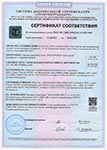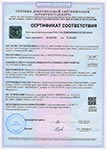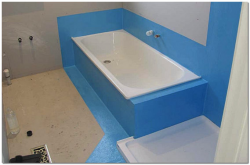Waterproofing the bathroom
The bathroom is noteworthy for its constantly high level of moisture, so waterproofing is essential during construction or remodeling. In addition, the fact must be considered that leakages in incoming water lines or sewage lines are possible in such an installation, which can lead to unfavorable consequences. The use of modern waterproofing materials produced by OOO Aquatron-BKhK lets you provide durability to ceilings, walls, and elements of the room interior. This will prevent flooding of the neighbors and expenditures for repairing the apartment below.
When waterproofing bathrooms, it is desirable to use compounds that possess penetrating capability. The Aquatron mixtures are among this group of materials; these Aquatron mixtures are manufactured on a cement-sand basis. They possess the following usage properties:
- full protection of the treated surface against the effects of water and moisture;
- increased service life of the materials;
- increased strength qualities of surfaces;
- high adhesion;
- environmental and sanitary qualities;
- resistance to low temperatures;
- restoration of technical properties of older surfaces;
- resistance to the appearance of fungus and mold;
- convenience and simplicity of application;
- resistance to the effects of aggressive chemical substances.
Aquatron materials can be used for waterproofing not only floors, but also walls and ceilings. The mixture is applied to a surface by means of a brush or spatula. The surface should be prepared in advance to allow maximum penetration of the compound. To do this, it is necessary to remove any foreign substance from the surface and carefully wash it.
Sequence of actions in waterproofing a bathroom
In order to perform the operation quickly, with maximum effect, and without loss of the room’s interior space, we recommend applying a combination of the innovative penetrating material Aquatron‑6 and the fast-acting spreading waterproofing compound Aquatron‑8. For the result to turn out dependable and long-lasting, the procedure must be followed precisely for preparing the solution and the sequence of preparatory operations.
- Seams between adjacent surfaces, for example, wall/floor or wall/ceiling, must be scraped clean. This procedure may be done by a hand tool or a punch.The size of the groove should be at least 20 × 20 mm.
- The channels thus produced must be carefully cleaned and flushed with water, then moistened before saturating the surface of the material.
- Using a spatula, fill the seams with the compound Aquatron‑8.
- Using a polishing machine or drill with a special attachment, remove any surface film from the concrete, as well as various soil from the foundation.
- Sweep away the products of the cleaning process, rinse well, and moisten the surface.
- Using a brush of medium stiffness or a flat spatula, apply the prepared Aquatron‑6 mixture. The coating should be up to 1.5 mm thick. For best results, after 2 or 3 hours, apply a second coating of the waterproofing. After treatment, finishing the surface can be performed after not less than 7 days.
Mixing and applying the Aquatron materials should conform strictly with the instructions presented on the packaging.
Consumption of materials in waterproofing a bathroom
To obtain a one ‑ or two-layer protective coating to a thickness of up to 1.5 mm, the following quantities of the waterproofing mixture will be needed:
- Aquatron‑6 — consumption is about 1 to 1.5 kg/m²;
- Aquatron‑8 — for a 25 × 25 mm groove, consumption of the material is 1.5 kg per linear meter.
The Aquatron-series waterproofing compounds have all required certificates and are recommended for use in all types of construction and designs, including reservoirs designed for storage of potable water.
If you have any questions relating to the properties and procedures for applying these materials, ask the specialists of our company. They will help you complete your waterproofing operations in a suitable and efficient manner.




